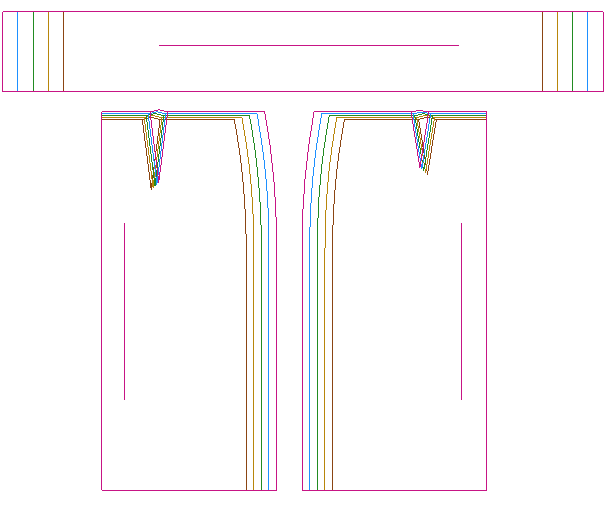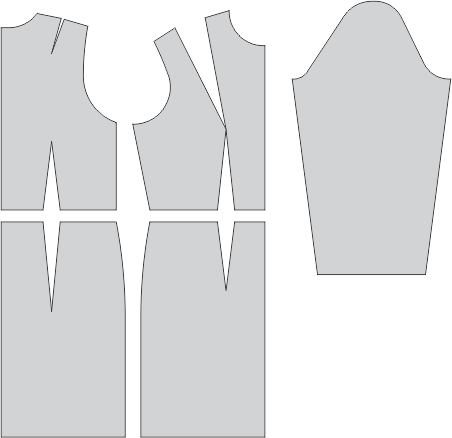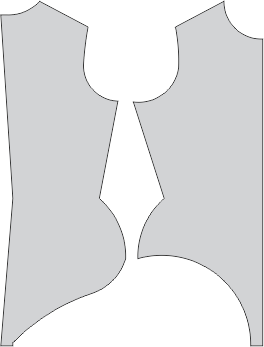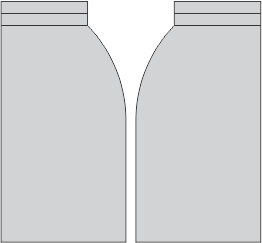Anatomy of the Sloper
"Well made sewing patterns are the foundation of fit and ... the foundation of fashion" (Hudson, 1988).
Properly fitting garments start with a well-made set of sewing patterns called slopers.
What is a sloper and why should you care?
Simply defined, slopers are a set of sewing patterns with...
- no style or design interest
- structural details such as darts and seams placed in traditional locations
- minimal ease
- no seam allowances
Slopers are a set of patterns from which most garment designs can be developed using flat pattern making techniques. Slopers are also called basic blocks, fit garments, master patterns, foundation patterns, toiles, or muslins.

Well-made and properly tested slopers...
- provide consistent fit, continuity of proportion, appropriate ease.
- provide the base patterns for standard or custom sizes.
- improve marketability, speed product development, and reduce returns.
- increase client satisfaction with custom-made garments.
Slopers are often tedious and time consuming to create and perfect but critical to the success of the designs which are derived from them. It is unwise to skip this step in garment creation.
Types of Slopers
For apparel manufacturing, a set of slopers should be created, tested, and maintained for all relevant body types such as misses, juniors, plus sizes, infants, toddlers, adolescents, tall, petites, mens, etc.
A separate set of slopers will be required for style types such as tops, shirts, dresses, pants, skirts, bras, and swimwear for both woven and knits fabrics.
Slopers for stretch knits must be different than those slopers for woven fabrics. Patterns for stretch knits are usually smaller around the body than patterns for woven fabrics. "Darts" are incorporated in patterns for stretch knits differently than for woven fabrics and some ease is often omitted.
Fit Models
Slopers are drafted from body measurements taken either from a live fit model or dress form. The fit of the slopers must be verified and perfected on the fit model or dress form before creating styled patterns from the slopers. Live fit models will provide a more accurate indication of fit since they are soft, compressible, and move and bend.

Dress forms are not as effective since they are hard and do not move or bend. And, not all styles can be developed and fit accurately on a dress form as a result. For example, corsets that are meant to shape and flatten the body cannot be fit and perfected effectively on a hard dress form.

For garments that will be produced in standard sizes, a fit model that best represents the measurements and body shape closest to the sample size typically in the middle of the size range is required so that the finished garment fits as many people in the target market as possible.

For custom dress making or tailoring, slopers should be drafted to client body measurements and fit on the actual client's body.
Sloper Sets
A set of slopers for woven fabrics typically include:
- Dress with waistline seam - half a bodice front and half a bodice back with
jewel neckline, half a skirt front and half a skirt back, and a full long set in sleeve.

- Sheath (dress with no waistline seam) - half front torso and half back torso
with jewel neckline, and a full long set in sleeve

- Pants - half pant front and half pant back; full waistband for woven fabrics

- Skirt - half skirt front and half skirt back; full waistband for woven fabrics

- Bra or Corset

A set of slopers for knit fabrics typically include:
- Leotard - one half leotard front and one half leotard back, and a full long set in sleeve

- Bodysuit or Jumpsuit

- Dartless Knit Top Sloper

- Dartless Knit Pant Sloper

- Dartless Knit Skirt Sloper

Reference:
Guide to Apparel Manufacturing, Hudson, Peyton B. Media Apparel, Inc. 1988



